Beginners Guides
Properly Dispose Of Coffee Grounds To Prevent Plumbing Clogs
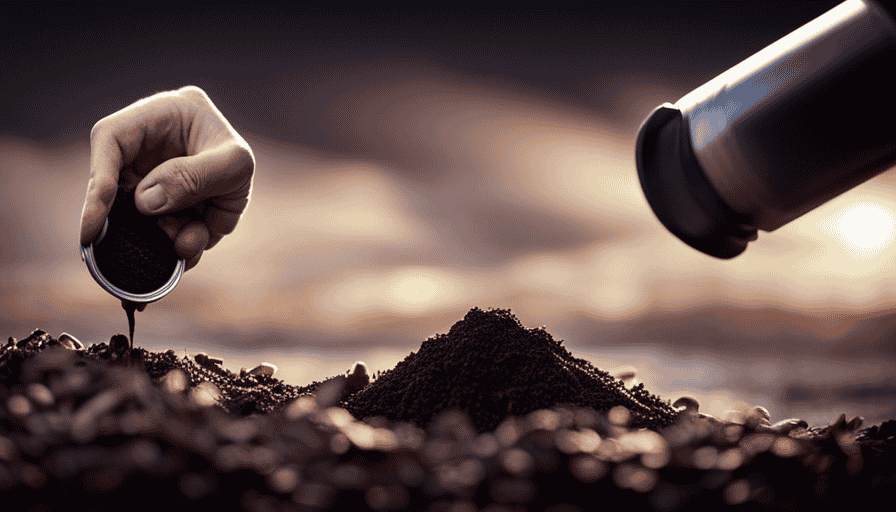
Were you aware that incorrect disposal of coffee grounds could lead to significant plumbing problems and blockages?
In fact, when coffee grounds come into contact with water, they turn into a thick paste that easily clogs drains. This can lead to costly repairs and headaches for homeowners.
To prevent these plumbing disasters, it is crucial to properly dispose of coffee grounds. Although running lots of water while disposing of coffee grounds down the drain can help, it is still not recommended. Instead, consider composting your coffee grounds, especially if you use a paper filter.
Composting not only helps the environment, but it also provides nutrients to your garden soil, absorbs heavy metals, and attracts earthworms. Additionally, coffee grounds have alternative uses such as being an exfoliating scrub, insect repellent, air freshener, or meat tenderizer.
So, let’s explore the proper ways to dispose of coffee grounds and reap the benefits while avoiding plumbing clogs.
Key Takeaways
- Coffee grounds should not be disposed of down the sink or garbage disposal to prevent plumbing clogs.
- Wet coffee grounds can turn into a thick paste that can clog drains, so it’s important to dispose of them properly.
- Running lots of water while disposing of coffee grounds down the drain can help prevent clogs, but it’s still best to avoid this method.
- Coffee grounds can be composted or thrown on the lawn to benefit the soil and attract earthworms, providing a more environmentally friendly way of disposing them.
How to Dispose
I should make sure to properly dispose of coffee grounds to prevent plumbing clogs. It’s important to know how to safely dispose of coffee grounds and why they shouldn’t be put down the sink or garbage disposal.
Coffee grounds can cause serious damage to plumbing and clog drains. When wet, they turn into a thick paste that can easily obstruct pipes. To avoid this, it’s best to avoid disposing of coffee grounds down the drain altogether.
Instead, consider composting them, especially if you use a paper filter. Coffee grounds are rich in nutrients and can benefit garden soil while attracting earthworms.
Alternatively, you can throw them in the trash. Remember, coffee grounds and grease are common culprits of clogged drains, so it’s crucial to dispose of them properly.
Benefits of Composting
Composting coffee grounds is a fantastic way to enrich garden soil, leading to healthier plants and more abundant harvests. For example, a friend of mine started composting their coffee grounds and noticed a significant increase in the size and quality of their tomato plants, producing a bumper crop of juicy, flavorful tomatoes.
The benefits of recycling coffee grounds through composting extend beyond just improving plant growth. By diverting coffee grounds from the landfill, you’re reducing the environmental impact of waste disposal. Coffee grounds add valuable organic matter to the compost pile, improving soil structure and water retention. They also provide essential nutrients like nitrogen, phosphorus, and potassium to the soil, promoting healthy plant growth.
Additionally, coffee grounds have the ability to absorb heavy metals, reducing their presence in the environment. By composting coffee grounds, you can contribute to a more sustainable and environmentally friendly gardening practice.
Alternative Uses
When looking for alternative uses for coffee grounds, one option is using them as an exfoliating scrub for the skin. Coffee grounds have a gritty texture that can help remove dead skin cells and leave the skin feeling smooth and refreshed.
Here are three DIY coffee scrubs that you can try at home:
-
Coffee and Coconut Oil Scrub: Mix coffee grounds with melted coconut oil to create a paste. Gently massage the scrub onto your skin in circular motions, focusing on areas that need exfoliation. Rinse off with warm water to reveal softer, smoother skin.
-
Coffee and Honey Scrub: Combine coffee grounds with honey to create a natural scrub that nourishes and moisturizes the skin. Apply the mixture to your face or body and gently scrub in circular motions. Rinse off with lukewarm water for a glowing complexion.
-
Coffee and Sugar Scrub: Mix coffee grounds with sugar and a little bit of olive oil to create a scrub that exfoliates and moisturizes the skin. Massage the scrub onto your skin in gentle circular motions, then rinse off with warm water for silky smooth skin.
These DIY coffee scrubs are a great way to reuse coffee grounds and give your skin a natural, rejuvenating treatment.
Frequently Asked Questions
Can coffee grounds be used as a natural fertilizer for indoor plants?
Using coffee grounds as a natural fertilizer for indoor plants is like giving them a power-packed energy boost. Coffee grounds are rich in nitrogen, potassium, and other essential nutrients that promote healthy plant growth. When added to the soil, they improve drainage, attract beneficial earthworms, and help retain moisture.
This organic fertilizer also acts as a natural pest repellent and can enhance the overall health and vitality of your indoor plants. Incorporating coffee grounds into your gardening routine can yield impressive results.
What are some common signs that indicate a clogged drain caused by coffee grounds?
Common signs of a clogged drain caused by coffee grounds include slow draining sinks, gurgling noises, and unpleasant odors.
To prevent clogs caused by coffee grounds in drains, it’s important to properly dispose of them. Avoid rinsing coffee grounds down the sink or garbage disposal. Instead, throw them in the trash or compost them. Running lots of water while disposing of coffee grounds can also help prevent clogs.
Regular maintenance and occasional use of coffee cleaning products can dissolve any build-up and keep drains clear.
Are there any specific types of coffee filters that are better for composting coffee grounds?
When it comes to composting coffee grounds, using paper filters is the best option. Paper filters are biodegradable and can be easily incorporated into the compost pile. They break down quickly, allowing the coffee grounds to mix with other organic materials and create nutrient-rich compost.
By using paper filters, you can ensure that your coffee grounds are effectively recycled and contribute to the health of your garden soil. Plus, composting coffee grounds helps reduce waste and promotes sustainability.
Can coffee grounds be safely disposed of in a septic system?
Coffee grounds can be safely disposed of in a septic system. They can actually be beneficial for the system and the surrounding soil.
Coffee grounds provide nutrients to the soil and can improve its fertility. They also attract earthworms, which help with soil aeration and nutrient distribution.
In addition to being used for gardening, coffee grounds have alternative uses such as being used as an exfoliating scrub, insect repellent, air freshener, or meat tenderizer.
How often should I clean my garbage disposal to prevent clogs caused by coffee grounds?
To prevent clogs caused by coffee grounds, it’s recommended to clean your garbage disposal regularly. I suggest cleaning it at least once a month. This will help remove any buildup and prevent clogs from occurring.
In addition to regular cleaning, it’s important to consider alternative disposal methods for coffee grounds. Instead of rinsing them down the sink, you can dispose of them in the trash or compost them. These methods are safer for your plumbing and the environment.
Conclusion
So there you have it, folks! After delving into the world of coffee grounds disposal, it’s clear that we must handle this matter with the utmost care. Let’s bid adieu to our coffee grounds down the drain or garbage disposal days, for they only bring forth plumbing nightmares.
Instead, let’s embrace the art of composting, where these little grounds can transform into nutrient-rich soil and attract some earthworm friends. And hey, if you’re feeling adventurous, why not explore the wonders of coffee grounds as a versatile exfoliating scrub or meat tenderizer? Just remember, the key to a clog-free life lies in properly disposing of those coffee grounds.
Happy brewing and disposing, everyone!
Noah, the Editor-in-Chief at Cappuccino Oracle, plays a pivotal role in shaping the voice and vision of our renowned platform. With an unwavering passion for coffee, coffee alternatives, and tea, Noah leads Cappuccino Oracle towards new horizons in the realm of coffee journalism.
Beyond his professional responsibilities, Noah serves as a mentor and guiding force for his team. His dedication to journalistic excellence and genuine love for coffee, coffee alternatives, and tea continue to inspire and motivate the Cappuccino Oracle family. In the ever-evolving world of these beverages, Noah’s leadership ensures that our platform remains at the forefront, delivering enlightening and enjoyable content to our readers worldwide.

When it comes to making the best bulletproof coffee, a top-notch blender is crucial.
The Blendtec Blender is widely recommended for this purpose, boasting 6 pre-programmed blending cycles and an impressive 8-year warranty. However, there are other options to consider as well.
Immersion blenders offer affordability and the convenience of blending directly in the container, while countertop units provide more power but are less convenient.
For blending hot liquids and crafting bulletproof coffee, the KitchenAid Immersion Blender, XProject 800W 4-In-1 Hand Blender, and Oster Versa Pro Performance Blender are all viable choices.
Travelers may opt for milk frothers or portable hand-held mixers, although these may not be ideal for long-term use.
Factors such as cost, durability, and convenience should be considered when selecting a blender.
The top recommendations for crafting bulletproof coffee are the powerful and hot liquid-friendly Vitamix 5200 Blender and the endorsed Blendtec Blender.
Ultimately, the Blendtec Blender is preferred due to its superior power, durability, and the endorsement by the bulletproof coffee founder.
Key Takeaways
- The Blendtec Blender is recommended for making bulletproof coffee due to its 6 pre-programmed blending cycles and 8-year warranty.
- When choosing a blender for hot liquids and making bulletproof coffee, options like the KitchenAid Immersion Blender, XProject 800W 4-In-1 Hand Blender, and Oster Versa Pro Performance Blender are recommended.
- Immersion blenders are more affordable and allow blending in the container, while countertop units provide more power but are less convenient.
- The top options for making bulletproof coffee are the Vitamix 5200 Blender and Blendtec Blender, both of which are powerful, designed for hot liquids, and offer long-term dependability.
What is it?
Bulletproof coffee is a type of coffee that requires a high-quality blender to properly blend the ingredients. This popular beverage is known for its claimed health benefits and is a favorite among coffee enthusiasts. The advantages of bulletproof coffee include increased energy levels, improved mental clarity, and enhanced focus.
It typically consists of freshly brewed coffee, grass-fed butter, and medium-chain triglyceride (MCT) oil. However, there are also different variations of bulletproof coffee that incorporate additional ingredients such as collagen peptides or flavored extracts.
To achieve the desired creamy and frothy texture, it is important to choose a blender that can effectively blend these ingredients together. A blender with sufficient power and durability, such as the Blendtec Blender or the Vitamix 5200 Blender, is recommended for making the perfect bulletproof coffee.
Types of Blenders
Countertop blenders, with their solid base and carafe, are more powerful but less convenient compared to immersion blenders. Immersion blenders, also known as hand blenders, are more affordable and allow for blending directly in the container.
They are lightweight and easy to maneuver, making them a popular choice for quick blending tasks. However, immersion blenders can be messier and may not provide as much power as countertop units. On the other hand, countertop blenders have a larger capacity and more powerful motors, making them suitable for blending larger quantities and tougher ingredients.
They also often come with additional features and pre-programmed blending cycles. However, they can be bulkier and take up more counter space.
To further highlight the pros and cons of these two types of blenders, the following table can be used:
Immersion Blenders Countertop Blenders Affordable More expensive Lightweight and easy to maneuver Bulky and takes up counter space Can blend directly in the container Require a separate blending jar May not provide as much power More powerful motors Messier to use Additional features and pre-programmed blending cycles
This comparison table can help individuals choose the type of blender that best suits their needs and preferences.
Blending Hot Liquids
When blending hot liquids, it is important to select a blender that is specifically designed to handle high temperatures. Blending hot liquids can be advantageous as it helps to create a smooth and well-incorporated mixture. However, safety precautions should be taken into consideration.
Here are three key points to keep in mind:
-
Safety Features: Look for blenders that have safety features such as a secure lid and a vented cap to release steam. This will prevent any accidents or splattering of hot liquid during blending.
-
Heat-resistant Materials: Choose blenders made with heat-resistant materials like glass or stainless steel. These materials can withstand high temperatures without warping or cracking, ensuring the safety of the user.
-
Gradual Blending: When blending hot liquids, it is important to start at a low speed and gradually increase the speed to avoid any sudden splashing or overflowing. This gradual blending process ensures a smooth and consistent mixture while maintaining safety.
By following these precautions and selecting a blender designed for hot liquids, you can enjoy the benefits of blending hot liquids without any safety concerns.
Options for Traveling
Options for traveling include using milk frothers and portable hand-held mixers, which can be used as alternatives for blending coffee on the go. While these options are convenient for short-term use, they may not provide the same level of blending power and consistency as a dedicated blender.
For travelers on a budget, there are some portable blender alternatives that offer a balance between affordability and functionality. One option is the Hamilton Beach Personal Blender, which is compact, lightweight, and comes with a blending jar that doubles as a travel cup. Another option is the Ninja Nutri Pro Compact Personal Blender, which features a powerful motor and comes with multiple blending cups for convenience.
When choosing a portable blender for bulletproof coffee while traveling, it is important to consider factors such as size, weight, power, and ease of cleaning. It is also worth noting that not all portable blenders are suitable for blending hot liquids, so it is important to check the manufacturer’s specifications before use.
Tips for Brewing and Blending
Blending bulletproof coffee requires careful attention to brewing techniques and ensuring that the ingredients are properly combined. To achieve the perfect cup of bulletproof coffee, here are some tips for brewing and blending:
-
Slightly cool the fresh coffee: Before blending, allow the coffee to cool slightly. This will prevent any potential damage to the blender from the heat.
-
Use a blender designed for hot liquids: Not all blenders can handle hot liquids, so it’s important to choose one that is specifically designed for this purpose. Blenders like glass blenders are safe to use with hot fluids.
-
Avoid using NutriBullet blenders: NutriBullet blenders are not recommended for hot liquids, as they may not be able to handle the heat.
-
Blend until smooth: Proper blending is essential to create a smooth mixture of butter, oil, and caffeine. Make sure to blend until all the ingredients are well combined.
By following these tips, you can ensure that your bulletproof coffee is perfectly blended and ready to enjoy.
Features and Specifications
The features and specifications of the recommended blenders for making bulletproof coffee play an important role in their overall performance and suitability for this specific task. When considering blenders for bulletproof coffee, power and price are key factors to compare.
The Vitamix 5200 Blender boasts a powerful 1490-watt motor, allowing it to effortlessly blend the ingredients for a smooth and creamy coffee. However, it comes with a higher price tag.
On the other hand, the Blendtec Blender offers a slightly higher motor power of 1560 watts, ensuring efficient blending. It also comes with a FourSide Jar and an 8-year warranty, providing added value for its price.
Both blenders are designed for hot liquids and offer long-term dependability, making them ideal choices for bulletproof coffee enthusiasts.
Considerations for Purchase
Considerations for purchasing a blender suitable for making bulletproof coffee include factors such as cost, durability, and convenience.
When it comes to blenders, there are two main types to consider: immersion blenders and countertop units. Immersion blenders are more affordable and allow for blending directly in the container, but they can be messier. Countertop units, on the other hand, provide more power but are less convenient.
It is also important to choose a blender that can handle hot liquids, as not all blenders are designed for this purpose.
Some recommended options for making bulletproof coffee include the KitchenAid Immersion Blender, the XProject 800W 4-In-1 Hand Blender, and the Oster Versa Pro Performance Blender. Each of these blenders has its own pros and cons, so it’s important to consider your specific needs and preferences when making a purchase decision.
Top Recommended Blenders
One of the top recommended options for making bulletproof coffee is the Vitamix 5200 Blender. This blender offers a powerful performance and is specifically designed for blending hot liquids. With its 1490 watts of power, it can easily handle the ingredients needed for bulletproof coffee, creating a smooth and creamy texture. The Vitamix 5200 Blender also comes with a 64 oz container, allowing you to make multiple servings at once. Additionally, it offers a 7-year warranty, ensuring long-term dependability.
In comparison, the Blendtec Blender is another popular choice for making bulletproof coffee. It features a 1560 watt motor and a FourSide Jar, providing excellent blending capabilities. The Blendtec Blender also has an 8-year warranty, which is longer than the warranties offered by both KitchenAid and Vitamix combined.
When considering Blendtec vs Vitamix for bulletproof coffee, both blenders are highly capable and offer impressive features. Ultimately, the decision between the two will depend on personal preferences and budget.
Frequently Asked Questions
Can I use a regular coffee maker to brew bulletproof coffee?
Using a regular coffee maker to brew bulletproof coffee may seem like a convenient option, but it may not yield the desired results. Bulletproof coffee requires proper blending to create a smooth mixture of butter, oil, and caffeine. Blending helps emulsify the ingredients and enhance the taste and texture of the coffee.
Blenders designed for hot liquids, such as the recommended Vitamix 5200 Blender and Blendtec Blender, are more suitable for this purpose. The benefits of using a blender include achieving a creamy consistency and fully incorporating the ingredients for a satisfying cup of bulletproof coffee.
Are there any blenders specifically designed for making bulletproof coffee?
Blender options for making bulletproof coffee include immersion blenders, countertop units, and milk frothers. Blending bulletproof coffee is important to create a smooth mixture of butter, oil, and caffeine. Not all blenders can handle hot liquids, so it’s crucial to choose one that can.
The KitchenAid Immersion Blender is an affordable option, while the XProject Hand Blender delivers a large amount of blending power. The Oster Versa Pro Performance Blender is a mid-range option with 1100 watts of power.
Can I use a hand mixer instead of a blender to make bulletproof coffee?
While a hand mixer can be used as an alternative to a blender for making bulletproof coffee, there are some pros and cons to consider.
One advantage is that hand mixers are typically more affordable and easier to store than blenders.
However, hand mixers may not blend the ingredients as thoroughly, resulting in a less smooth and creamy texture.
Additionally, hand mixers may not be able to handle hot liquids as effectively as blenders.
Therefore, while a hand mixer can be used, it may not provide the same level of blending quality as a blender specifically designed for making bulletproof coffee.
Do I need to use a specific type of butter for bulletproof coffee?
When making bulletproof coffee, it is recommended to use a specific type of butter. Grass-fed butter is often preferred due to its higher nutrient content compared to conventional butter. Grass-fed butter is rich in omega-3 fatty acids, vitamins, and minerals. It also contains a higher concentration of conjugated linoleic acid (CLA), which has been linked to various health benefits. Using grass-fed butter in bulletproof coffee can enhance the flavor and provide additional nutritional value. Other types of butter may not offer the same benefits.
Can I use a regular blender to blend hot liquids for bulletproof coffee?
Using a regular blender for bulletproof coffee can have both pros and cons.
One advantage is that regular blenders are commonly available and more affordable compared to specialized blenders.
However, there are some drawbacks to using a regular blender for hot liquids. Regular blenders may not be designed to handle high temperatures, resulting in potential damage or even injury.
Additionally, regular blenders may not provide the necessary power to properly blend the butter, oil, and coffee, resulting in a less smooth and creamy texture.
Noah, the Editor-in-Chief at Cappuccino Oracle, plays a pivotal role in shaping the voice and vision of our renowned platform. With an unwavering passion for coffee, coffee alternatives, and tea, Noah leads Cappuccino Oracle towards new horizons in the realm of coffee journalism.
Beyond his professional responsibilities, Noah serves as a mentor and guiding force for his team. His dedication to journalistic excellence and genuine love for coffee, coffee alternatives, and tea continue to inspire and motivate the Cappuccino Oracle family. In the ever-evolving world of these beverages, Noah’s leadership ensures that our platform remains at the forefront, delivering enlightening and enjoyable content to our readers worldwide.
Beginners Guides
Achieving Consistent Extraction: The Power of Even Distribution

Did you know that maintaining consistent extraction plays a crucial role in creating top-notch coffee? A critical factor in achieving this uniformity is ensuring the even distribution of coffee grounds. If distribution is uneven, it can result in unbalanced flavors caused by over-extraction in certain areas and under-extraction in others.
Overcoming the challenges of clumping, poor distribution, and inconsistent grind is crucial for a delightful coffee experience. In this article, we will explore the Weiss Distribution Technique (WDT) and its benefits in promoting uniform distribution and minimizing channeling during espresso extraction.
Key Takeaways
- Uneven distribution leads to inconsistent extraction, with over-extraction in some parts and under-extraction in others.
- The Weiss Distribution Technique (WDT) improves the uniformity of coffee grounds distribution and minimizes channeling during espresso extraction.
- Implementing WDT involves stirring the coffee grounds in a circular motion, leveling the coffee bed, and tamping with even pressure.
- WDT offers advantages such as improved extraction consistency, uniform water flow, reduced channeling, and enhanced flavor and aroma.
The Importance of Even Distribution for Consistent Extraction
In the pursuit of consistent extraction, the importance lies in achieving an even distribution of coffee grounds throughout the portafilter. This is because uneven distribution can lead to inconsistent extraction, resulting in over-extraction in some areas and under-extraction in others. To achieve balanced flavors, every particle of coffee grounds must contribute equally to the flavor profile. The science behind even distribution in coffee extraction involves ensuring that water finds the path of least resistance, promoting an even flow through all the coffee grounds.
To achieve even distribution, there are practical tips that can be followed. Firstly, it is important to prevent clumping of the coffee grounds, as clumps can lead to uneven extraction. Secondly, proper distribution and tamping techniques can help prevent channeling, which is the uneven flow of water through the coffee bed. Additionally, using a consistent grind and mastering the technique can also contribute to achieving even distribution.
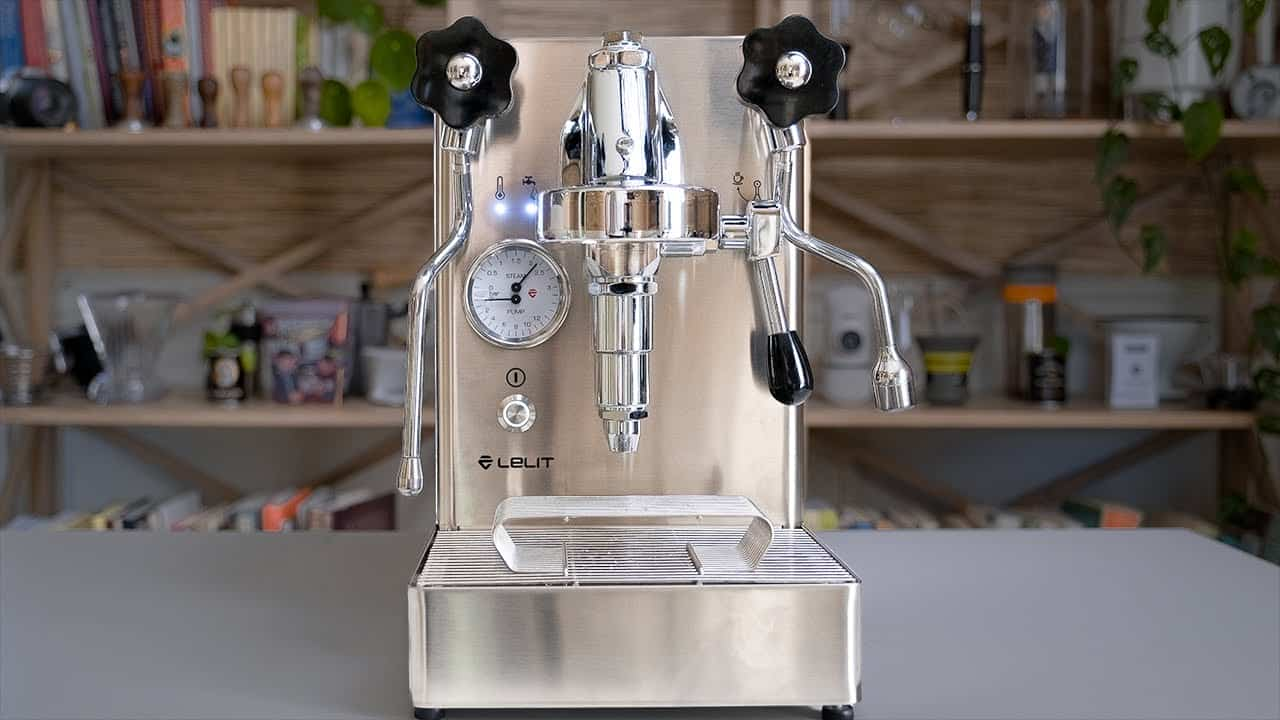
Challenges in Achieving Perfect Distribution
Achieving perfect distribution of coffee grounds poses several challenges in the pursuit of consistent extraction. These challenges include clumping of coffee grounds, channeling caused by poor distribution or tamping, inconsistent grind from different grinders, and the tricky technique for beginners.
Overcoming these distribution challenges is essential for a delightful coffee experience. Techniques for improving distribution consistency include the Weiss Distribution Technique (WDT), which was introduced by John Weiss. WDT improves the uniformity of coffee grounds distribution, minimizes channeling during espresso extraction, and promotes even water flow by using a thin tool to stir and redistribute grounds.
Other distribution methods such as Stockfleth’s method, tapping method, leveling tools, and shaking method are also compared, but the WDT stands out for its attention to detail and effectiveness in breaking up clumps.
The Weiss Distribution Technique (Wdt) and Its Benefits
One of the notable benefits of the Weiss Distribution Technique (WDT) is its ability to improve the uniformity and consistency of coffee grounds distribution during espresso extraction.

This technique, introduced by John Weiss, has gained traction among baristas and home brewers for its effectiveness in minimizing channeling and promoting even water flow. By using a thin tool to stir and redistribute the grounds, the WDT breaks up clumps and ensures that every particle contributes to the flavor equally.
The advantages of implementing the WDT include improved extraction consistency, reduced channeling, and enhanced flavor and aroma. For beginners using the WDT technique, it is recommended to start simple, focus on consistency, and document the process for refinement over time.
Incorporating the WDT with other techniques can also elevate the coffee quality.
History and Origin of WDT
Since its introduction by John Weiss, the Weiss Distribution Technique (WDT) has evolved from a simple and effective method to a recognized technique used by baristas and home brewers alike. Here is a brief history and origin of the WDT:

-
Online tip to recognized technique: Initially, the WDT gained traction on coffee forums and communities as an effective way to improve uniformity of coffee grounds distribution. It quickly transitioned from a mere online tip to a recognized technique due to its success in minimizing channeling during espresso extraction.
-
Name after its creator: The technique is named after its creator, John Weiss, who introduced it as a simple and effective method for achieving even distribution of coffee grounds.
-
Baristas and home brewers: Over time, the WDT technique has become widely adopted by baristas and home brewers alike. Its effectiveness in breaking up clumps and promoting even water flow has made it a popular choice among coffee enthusiasts.
-
Evolution of the WDT technique: As more people started using the WDT, it has undergone refinements and variations. Baristas and home brewers have experimented with different tools and techniques to further improve the distribution process.

Common misconceptions about WDT: Despite its proven effectiveness, some misconceptions surrounding the WDT technique still exist. These include the belief that it is a complicated and time-consuming process, or that it doesn’t make a noticeable difference in the final brew. However, with proper understanding and practice, the WDT can greatly contribute to achieving consistent extraction and a delicious cup of coffee.
Implementing the WDT: Step-by-Step Guide
To successfully implement the WDT technique, follow this step-by-step guide for achieving even distribution of coffee grounds.
-
First, ensure that the portafilter is clean and ready for use.
-
Next, dose the required amount of coffee into the portafilter basket.
-
Gently stir the coffee grounds in a circular motion using a thin tool, such as a paperclip or toothpick, to break up any clumps and promote uniform distribution.
-
Once the grounds are evenly distributed, level the coffee bed with a flat edge to create a consistent surface.
-
Finally, tamp the coffee with even pressure to further enhance the even distribution.
Frequently Asked Questions
What Are Some Common Misconceptions About Even Distribution in Coffee Extraction?
Common misconceptions about even distribution in coffee extraction include the belief that it is unnecessary or that it doesn’t significantly impact flavor. Techniques for even distribution, such as the Weiss Distribution Technique, are essential for consistent extraction and balanced flavors.
Can the Weiss Distribution Technique Be Used for Other Brewing Methods Besides Espresso?
The Weiss Distribution Technique (WDT) can be used for alternative brewing methods besides espresso. It promotes even extraction, resulting in enhanced flavor and aroma. Its benefits include improved consistency and reduced channeling.
How Does Clumping Affect the Extraction Process and Flavor of the Coffee?
Clumping in coffee grounds affects extraction consistency and flavor. Uneven distribution leads to over-extraction in some parts and under-extraction in others. Techniques like the Weiss Distribution Technique (WDT) improve consistency and enhance the overall coffee experience.
Are There Any Specific Tools or Equipment Required to Implement the Weiss Distribution Technique?
Specific tools for implementing the Weiss distribution technique include a thin tool for stirring and redistributing coffee grounds. Even distribution is crucial for consistent extraction, ensuring uniform water flow and enhanced flavor and aroma.
What Are Some Alternative Methods to Achieve Even Distribution in Coffee Extraction?
Alternative techniques to achieve even distribution in coffee extraction include Stockfleth’s method, tapping method, leveling tools, and shaking method. These methods aim to break up clumps and promote uniform water flow for improved extraction consistency and enhanced flavor.
Conclusion
In the quest for the perfect cup of coffee, achieving consistent extraction is paramount. Even distribution of coffee grounds is key to this process, ensuring that each particle contributes to the overall flavor.
The Weiss Distribution Technique (WDT) has emerged as a powerful method to overcome the challenges of clumping and channeling, promoting uniformity and enhancing the espresso extraction process.
With its history and origin explored, a step-by-step guide provided, and practical tips offered, the WDT proves to be a valuable tool in the pursuit of a delightful coffee experience.
In the vast and diverse world of coffee, coffee alternatives, and tea, Olivia has found her calling. As an author and a dedicated coffee and tea aficionado, her work for Cappuccino Oracle reflects her profound love and understanding of the intricate complexities found within these beverages. Olivia’s passion for the subject serves as both a catalyst for her creativity and a connection point with her audience.
Olivia’s appreciation for coffee, coffee alternatives, and tea blossomed at an early age. She discovered that these beverages invigorated her senses and stimulated her creative spirit. From the nuanced flavors of single-origin roasts to the captivating narratives intertwined with coffee, coffee alternatives, and tea trade and culture, Olivia found an unlimited source of inspiration in her daily cup.
Her love for these beverages and her talent for storytelling eventually converged at Cappuccino Oracle. As an author, Olivia’s mission is to illuminate the intricate tapestry that makes up the world of coffee, coffee alternatives, and tea. Her articles span a diverse range of topics, encompassing everything from the unique flavors of different brews to the sociocultural history intertwined with their cultivation and consumption.
Beginners Guides
How Does The Caffeine Content In Tea And Energy Drinks Affect The Body Differently

The adage ‘You are what you drink’ aptly applies, especially regarding caffeine. This natural stimulant present in tea and energy drinks significantly influences our physiology. However, have you considered the varying effects of caffeine levels in these drinks on our body?
In this article, we will delve into the fascinating world of caffeine and explore its effects on the body.
Firstly, we will examine the caffeine content in tea and energy drinks, comparing the two and highlighting any differences. We will then explore how caffeine is absorbed and metabolized by the body, shedding light on why we may experience varying effects.
From there, we will delve into the effects of caffeine on the brain and nervous system, as well as its influence on heart health. Additionally, we will explore the impact of caffeine on our sleep patterns and discuss personal factors that can affect our sensitivity to this powerful substance.
So grab a cup of tea or energy drink, and let’s dive into the stimulating world of caffeine.
Key Takeaways
- The caffeine content in tea and energy drinks can have different effects on the body.
- Tea typically contains lower levels of caffeine compared to energy drinks, which may result in milder stimulant effects.
- Energy drinks, with their higher caffeine content, may enhance exercise performance and reduce perceived exertion.
- Tea, being lower in caffeine, may have less impact on sleep patterns compared to energy drinks, which can disrupt sleep quality and duration.
Understanding Caffeine’s Effects on the Body
Understanding how caffeine affects the body differently in tea and energy drinks is crucial for comprehending the intricate ways in which these beverages impact our overall well-being.
Caffeine is a stimulant that affects the central nervous system, increasing mental alertness and reducing fatigue. When consumed before exercise, caffeine can improve performance by enhancing endurance, reducing perceived exertion, and increasing fat oxidation. Studies have shown that caffeine can also improve cognitive function, including attention, reaction time, and memory.
However, the effects of caffeine can vary depending on the source. Tea contains lower levels of caffeine compared to energy drinks, but it also contains other compounds like L-theanine, which may have calming effects.
Transitioning into the subsequent section about the caffeine content in tea, it is important to understand how these additional compounds in tea may influence the body differently.
The Caffeine Content in Tea
To truly grasp the impact, imagine how that invigorating cup of tea you enjoy every morning sends a jolt of energy coursing through your veins, making you feel more alive than ever. When it comes to caffeine content, tea usually contains less caffeine than coffee, but the exact amount can vary depending on the type of tea.
Here are three examples:
- Green tea: Contains around 20-45 mg of caffeine per 8-ounce serving.
- Black tea: Typically has 40-70 mg of caffeine per 8-ounce serving.
- Herbal tea: Usually caffeine-free, but some varieties like yerba mate may contain small amounts.
Knowing the caffeine levels in different types of tea can help you make informed choices about your daily caffeine intake.
Now, let’s delve into the caffeine content in energy drinks.
The Caffeine Content in Energy Drinks
Imagine the electrifying surge of energy that rushes through you with every sip of those fizzy, vibrant drinks you can’t resist. Energy drinks are known for their high caffeine content, which is one of the main ingredients that gives you that instant boost.
In fact, energy drinks typically contain much higher levels of caffeine compared to tea. While a cup of tea usually contains around 30-50 milligrams of caffeine, energy drinks can have anywhere from 80 to 300 milligrams per serving.
Such high levels of caffeine in energy drinks can potentially lead to caffeine overdose if consumed excessively. It is important to be mindful of your caffeine intake and not exceed the recommended limits.
Now, let’s delve into the absorption and metabolism of caffeine, and how it affects our bodies.
Absorption and Metabolism of Caffeine
The electrifying surge of energy you feel after consuming energy drinks is due to the rapid absorption and metabolism of caffeine in your body.
When you drink an energy drink, the caffeine is quickly absorbed into your bloodstream through the lining of your stomach and small intestine. From there, it is transported to your liver, where it undergoes various metabolic pathways. One of these pathways involves the enzyme cytochrome P450 1A2, which breaks down caffeine into three primary metabolites: paraxanthine, theobromine, and theophylline.
Each of these metabolites has its own effects on the body, contributing to the overall physiological response to caffeine. The absorption rate and metabolism of caffeine can vary from person to person, depending on factors such as age, genetics, and liver function.
Understanding how caffeine is absorbed and metabolized is crucial in understanding its effects on the brain and nervous system.
Effects of Caffeine on the Brain and Nervous System
Get ready to experience a surge of energy as caffeine zips through your bloodstream, activating your brain and nervous system. Caffeine has profound effects on memory and cognitive function, enhancing alertness and improving attention span. Studies have shown that it can enhance short-term memory and improve overall cognitive performance. However, excessive caffeine consumption may lead to anxiety and restlessness, as it stimulates the release of adrenaline, a hormone that triggers the body’s "fight or flight" response. In addition, caffeine can also affect mood by increasing dopamine levels, which can improve feelings of well-being and happiness. Nevertheless, it’s important to note that individual responses to caffeine vary, and excessive consumption can lead to negative effects such as jitteriness and insomnia. Transitioning into the subsequent section about the ‘impact on heart health’, caffeine not only affects the brain, but also has implications for cardiovascular health.
Impact on Heart Health
When it comes to the impact of caffeine on heart health, it’s important to consider its effect on heart rate and blood pressure. Caffeine has been shown to temporarily increase both heart rate and blood pressure, which can be concerning for individuals with pre-existing cardiovascular conditions.
Additionally, long-term consumption of caffeine has been associated with an increased risk of cardiovascular issues, such as heart disease and hypertension. These findings highlight the need for moderation and awareness when it comes to caffeine intake and its potential impact on our heart health.
Caffeine’s Effect on Heart Rate and Blood Pressure
Contrarily, sipping on a cup of tea or chugging an energy drink can have contrasting effects on your heart rate and blood pressure. While both tea and energy drinks contain caffeine, their effects on the cardiovascular system differ. Here are five key points to consider:
Tea has a moderate amount of caffeine, which can slightly increase heart rate and blood pressure. However, these effects are usually short-lived and not significant enough to cause concern.
Energy drinks, on the other hand, often contain high levels of caffeine, which can lead to a more pronounced increase in heart rate and blood pressure. This can be especially problematic for individuals with underlying heart conditions.
Caffeine’s impact on exercise performance varies. Some studies suggest that moderate caffeine consumption can enhance endurance and performance, while excessive intake may lead to negative effects.
Tea is a hydrating beverage, contributing to overall hydration levels. Energy drinks, due to their caffeine content, can have a diuretic effect, potentially increasing the risk of dehydration.
Considering the long-term effects on cardiovascular health, excessive consumption of energy drinks, with their high caffeine content and added ingredients, may pose a greater risk compared to moderate tea consumption.
With these considerations in mind, let’s explore the long-term effects on cardiovascular health.
Long-Term Effects on Cardiovascular Health
The long-term impact of regular consumption of caffeine-containing beverages on cardiovascular health is worth exploring. Research suggests that excessive intake of caffeine can have adverse effects on the cardiovascular system. Studies have shown that long-term consumption of high doses of caffeine can lead to increased risk of cardiovascular diseases such as hypertension, heart rhythm disorders, and even heart attacks. Additionally, caffeine has been found to have negative effects on cognitive function in the long term. It can impair memory, attention, and overall cognitive performance. On the other hand, caffeine has been shown to have a positive impact on exercise performance. It can enhance endurance, reduce perceived exertion, and improve overall athletic performance. These findings highlight the importance of moderation when consuming caffeine-containing beverages for long-term cardiovascular health and cognitive function. Moving on to the next section, let’s explore caffeine’s influence on sleep patterns.
Caffeine’s Influence on Sleep Patterns
Caffeine’s impact on sleep patterns can disrupt the body’s natural rhythm and lead to restless nights. Research shows that consuming caffeine, whether from tea or energy drinks, can affect the quality and quantity of sleep.
Caffeine’s influence on cognitive function is well-documented, with studies suggesting that it can improve alertness and concentration. However, when it comes to sleep, caffeine acts as a stimulant that can delay the onset of sleep and reduce overall sleep duration. This can have significant implications on athletic performance, as sleep is crucial for recovery and optimal physical functioning.
It’s important to note that individual sensitivity to caffeine varies, with some people being more affected by its sleep-disrupting effects than others. Transitioning into the next section, personal factors and sensitivity to caffeine play a role in determining how individuals respond to its effects without needing to take a step.
Personal Factors and Sensitivity to Caffeine
When it comes to caffeine, everyone is different in terms of their tolerance and sensitivity. Some people may be able to handle large amounts of caffeine without feeling any negative effects, while others may be more sensitive and experience jitters, anxiety, or trouble sleeping even with small amounts.
These individual differences in caffeine sensitivity can be influenced by various factors, including genetics. Research has shown that certain genetic variations can affect how our bodies process and metabolize caffeine, which can ultimately impact our response to it.
Individual Tolerance and Sensitivity
Feeling tired? Did you know that your individual tolerance and sensitivity can determine how caffeine affects your body differently in tea and energy drinks? Everyone has a unique response to caffeine based on their individual tolerance and sensitivity levels. Some people may be more sensitive to caffeine and experience its effects more strongly, while others may have a higher tolerance and not feel the same impact. Factors such as age, weight, metabolism, and overall health can influence individual tolerance and sensitivity. Understanding your own caffeine tolerance can help you make informed decisions about consuming tea or energy drinks.
In the next section, we’ll explore how genetic variations in caffeine processing can also play a role in how our bodies react to caffeine.
Genetic Variations in Caffeine Processing
Genetic variations can play a role in how our bodies react to caffeine, but how exactly do these variations impact our response? Well, when it comes to caffeine metabolism, certain genetic variations can affect how quickly or slowly our bodies break down and eliminate caffeine. This can ultimately influence our sensitivity to caffeine and how it affects us.
One key genetic variation that has been studied is in the gene CYP1A2, which is involved in caffeine metabolism. People with certain variations in this gene may metabolize caffeine more slowly, leading to higher levels of caffeine in their system and potentially increased sensitivity to its effects. On the other hand, individuals with faster caffeine metabolism may experience a reduced sensitivity to caffeine.
To illustrate the potential impact of genetic variations on caffeine metabolism, consider the following table:
| Genotype | Caffeine Metabolism Speed | Caffeine Sensitivity |
|---|---|---|
| Slow metabolizer | Slow | Increased |
| Fast metabolizer | Fast | Reduced |
This table demonstrates the potential relationship between genetic variations in caffeine metabolism, caffeine sensitivity, and the speed at which caffeine is broken down in the body. While genetic variations are just one piece of the puzzle, they can contribute to individual differences in how caffeine affects us.
Frequently Asked Questions
Can caffeine in tea and energy drinks cause dehydration?
Yes, caffeine in tea and energy drinks can cause dehydration. It acts as a diuretic, increasing urine production. This can lead to fluid loss and potentially impact cognitive function and sleep quality.
Is it true that caffeine can enhance athletic performance?
Yes, it is true that caffeine can enhance athletic performance. Caffeine increases caffeine metabolism, which can lead to improved endurance and reduced fatigue. It also has stimulant effects that can increase heart rate during exercise.
Are there any long-term effects of consuming high levels of caffeine?
Consuming high levels of caffeine can have long-term health risks such as heart problems and addiction. Additionally, it can negatively impact sleep quality, leading to insomnia and restlessness.
Does the caffeine content in tea and energy drinks affect weight loss or weight gain?
The caffeine content in tea and energy drinks can affect weight loss or weight gain. It can enhance metabolism and increase calorie burning, potentially aiding in weight management. However, other factors such as diet and exercise also play a crucial role.
Can caffeine withdrawal symptoms occur when reducing or stopping the consumption of tea and energy drinks?
Experiencing caffeine withdrawal symptoms, like headaches and fatigue, is common when reducing or stopping the consumption of tea and energy drinks. These symptoms can also disrupt sleep quality, making it harder to get a good night’s rest.
Conclusion
In conclusion, the caffeine content in tea and energy drinks affects the body differently based on factors such as absorption, metabolism, and individual sensitivity.
While both beverages contain caffeine, the higher levels found in energy drinks can lead to increased alertness and energy levels. On the other hand, the lower caffeine content in tea allows for a more gradual and sustained release of energy.
For instance, a case study conducted on individuals who consumed energy drinks showed a significant increase in heart rate and blood pressure, while those who consumed tea experienced a more moderate and manageable effect on their cardiovascular system.
Arf, an author and an innovative enthusiast of coffee, coffee alternatives, and tea, plays a crucial role as a contributor to the esteemed Cappuccino Oracle platform. Renowned for his curiosity and passion for these captivating beverages, Arf has carved out a unique space for himself in the world of exploration and writing. He realized that coffee, coffee alternatives, and tea are not mere drinks to keep one awake, but universes of flavors and stories waiting to be explored.
Arf’s articles for Cappuccino Oracle blend meticulous research with personal experiences, providing readers with an in-depth understanding of various types of coffee, coffee alternatives, and tea, along with their unique characteristics, cultures, and histories. His honest reviews and engaging narratives guide readers on their own journeys, helping them discover their preferences and find their perfect brew.
-

 Espresso Machines Reviews4 weeks ago
Espresso Machines Reviews4 weeks agoDeLonghi Eletta Explore: A Comprehensive Review [2025]
-
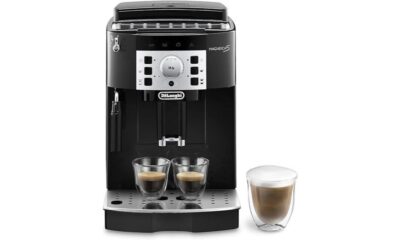
 Espresso Machines Reviews4 weeks ago
Espresso Machines Reviews4 weeks agoDeLonghi Magnifica S ECAM22.110.B Review: A Coffee Lover's Dream [2025]
-

 Cappuccino Oracle Selected Reviews4 weeks ago
Cappuccino Oracle Selected Reviews4 weeks agoBest Glass Water Bottles for Eco-Friendly Hydration [2025]
-
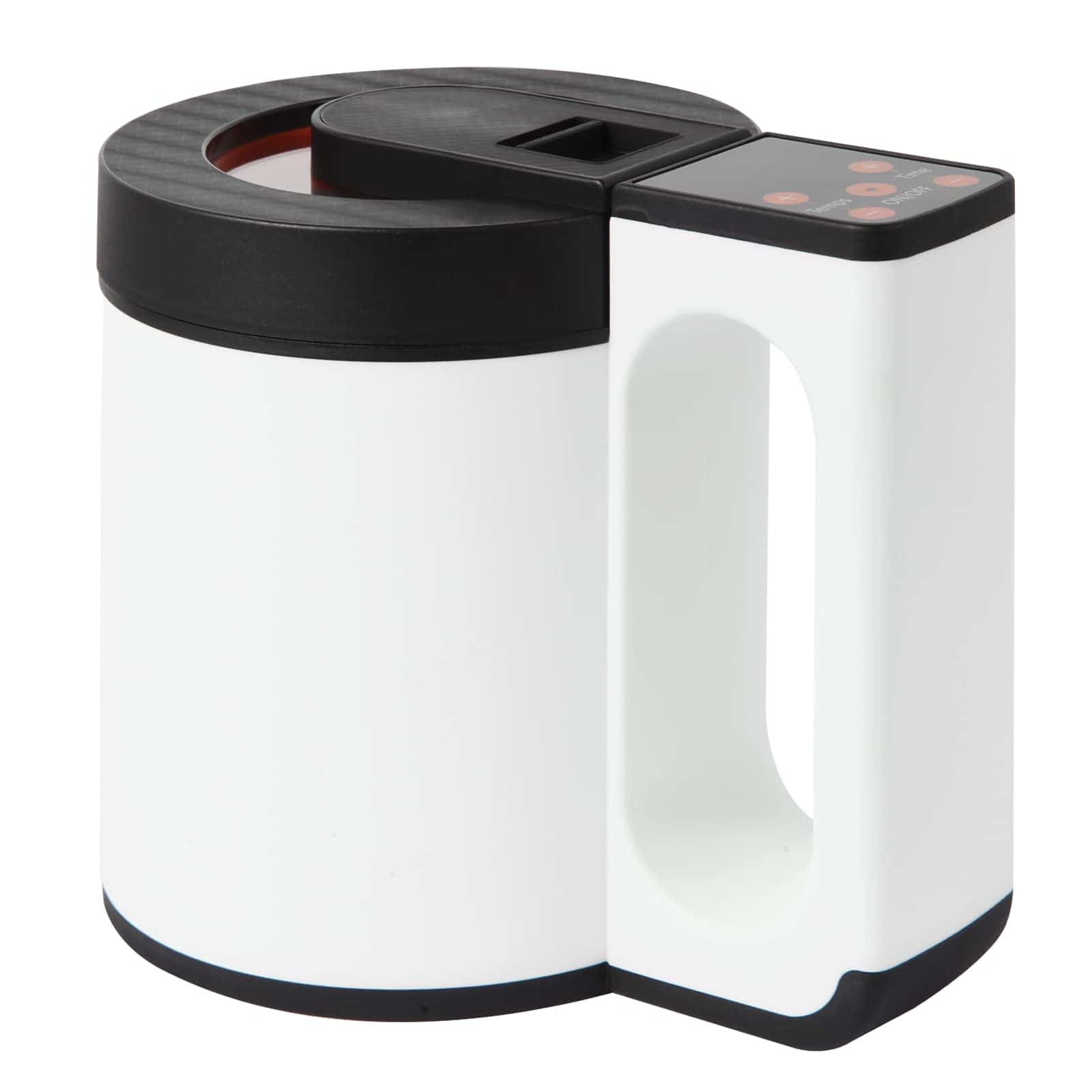
 Cappuccino Oracle Selected Reviews1 week ago
Cappuccino Oracle Selected Reviews1 week agoHighPlant HerbAblility Decarboxylator and Infusion Machine Review (2025)
-

 Espresso Machines Reviews4 weeks ago
Espresso Machines Reviews4 weeks agoGaggia Classic Evo Pro Espresso Machine Review [2025]
-

 Cappuccino Oracle Selected Reviews4 weeks ago
Cappuccino Oracle Selected Reviews4 weeks agoBest Onion Choppers for Efficient and Consistent Chopping [2025]
-

 Cappuccino Oracle Selected Reviews2 weeks ago
Cappuccino Oracle Selected Reviews2 weeks agoNinja JC151 NeverClog Cold Press Juicer Review
-
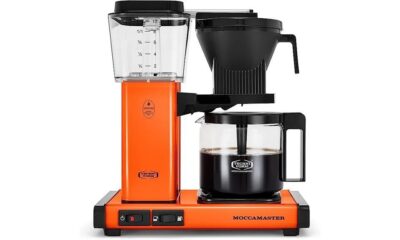
 Espresso Machines Reviews2 weeks ago
Espresso Machines Reviews2 weeks agoTechnivorm Moccamaster KBGV Review: The Perfect Coffee Maker































